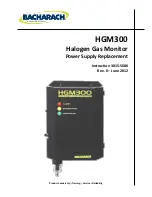
12
13
- To find the exact location of target, you need to practice more times.
TARGET INDICATIONS
Numeric Ranges Of Target
IRON
00-10
5¢
11-20
P-TAB
21-40
ZN(1¢)
41-60
10¢
61-75
25¢
76-99
Note: There are a wide variety of metals and no target can be identified for certain
until unearthed. This table is for general reference only.
Types Of Target
IRON
It indicates that the target is probably iron.
5¢
It indicates that the target is probably 5¢ or a nickel. Some
small gold rings might register within this range.
P-TAB
It indicates that the target is probably a pull tab of an
aluminum can. Some small gold rings might register within
this range.
ZN,1¢
It is indicated that the target is probably a type of metal of
1¢ or metal of zinc alloy. Some medium sized gold rings
might register within this category.
10¢
It indicates that the target might be a 10¢. Some large
rough gold items might register within this category.
25¢
It indicates that the target is probably 25¢ or a silver coin.
Tones
Low Tone
IRON, 5¢, same as for foil, bottle cap or nickels.
Medium Tone
P-TAB, ZN, 1¢ (aluminum pull tabs, zinc or copper items.)
High Tone
25¢, 10¢ same as for brass or silver items.
The detector comes with three tones for different types of metal and the built-in audio
identification system sounds a unique tone for each of three metal categories. This
makes it easier to identify the metal being detected.
Note:
- When you set the detector to DISC or NOTCH mode, the detector sounds a
medium or high tone when it detects highly oxidized iron.
- Depending on the purity, about 15 percent of gold rings cause the detector to sound
a medium tone.
OUTDOOR TESTING AND USE
1. Turn the VOLUME switch clockwise to power on the metal detector.
2. Follow the steps of 2 described in section of “Indoor Testing and Use” to set the
operating mode.
3. Find an area on the ground outside where there is no metal stuff like sprayer in
the yard.
4. Place a metal sample you want the detector to find (such as a gold ring or a coin)
on the ground.
Note: If you are using valuable metal such as gold to test the detector, mark the
area where you place the item, to help you can find it later. Do not place it in tall
grass or weeds.
5. Hold the search coil level to the ground about 1-2 inches above the surface and
slowly move the search coil over the area where you placed the sample, sweeping
the search coil in a side-to- side motion.



























